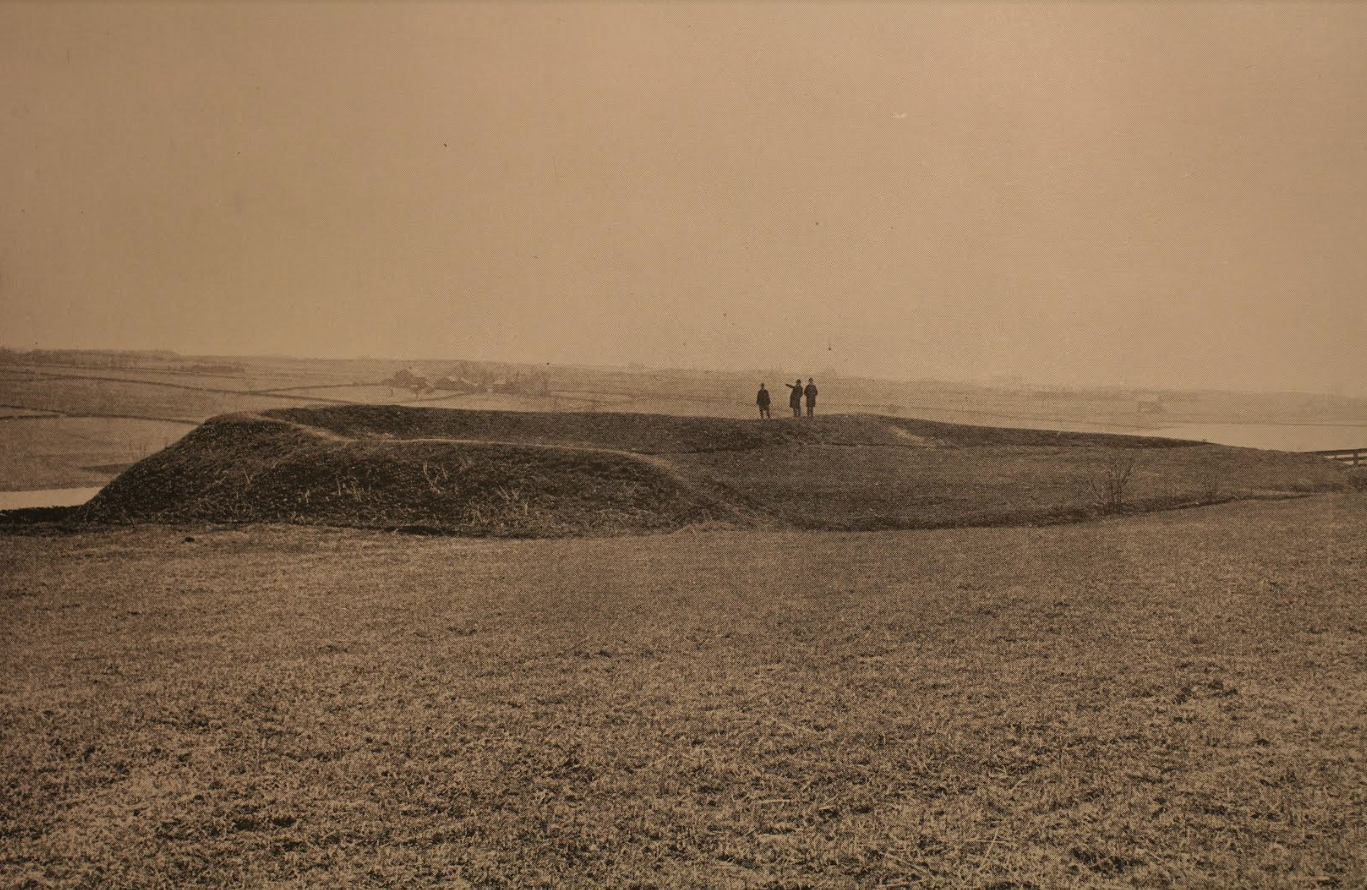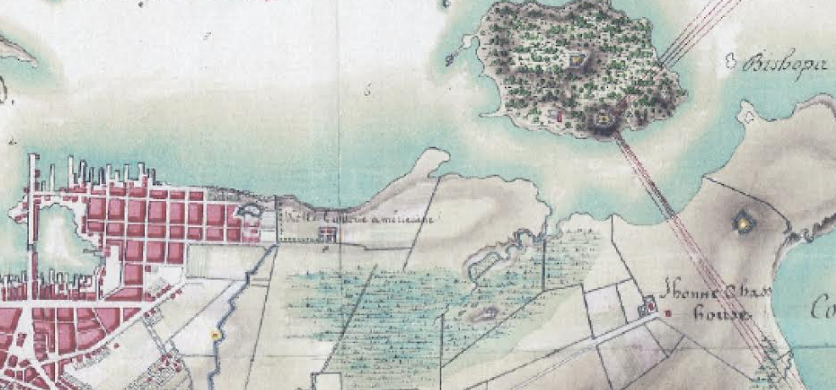Mention Rhode Island during the American Revolution, and two things come to mind: the 1772 burning of the Gaspee, and the famous 1st Rhode Island Regiment initially composed largely of African-Americans and Native Americans. Those with more knowledge of the war might also think of the August 1778 siege and battle that was the first combined operation of French and American forces, and the arrival of a French army under General Rochambeau in 1780.
Rarely considered is that Rhode Island was on the front lines during much of the war, as host of a British and German garrison for three years and potential target for attacks on shipping at other times. American, British, French and German troops all spent time in Rhode Island, and anywhere soldiers encamped or garrisoned they built fortifications for protection in the event of an attack. Some fortifications were small, temporary works, while others were extensive networks of positions. A few played key roles in battles and other operations, while most were just part of routine military activity and vanished into obscurity as soon as the armies moved on.
Historian John K. Robertson knows about Rhode Island’s fortifications. All of them. Every single one. He spent decades searching for them, learning about them, compiling details, carefully cataloging every bit of information available on the dozens of defensive works erected in every part of the colony and state in the years before the Revolutionary War through its conclusion in 1783. His work is now available in a lavishly-illustrated volume.
A retired army engineering officer, Robertson brings strong professional background to the subject but relies on historical material rather than modern training and terminology to write about the Revolution. His book begins with primer on eighteen century fortifications, artillery and ammunition, describing the components and features and explaining terms that appear frequently in period writings but are obscure today. This alone makes the book useful for anyone interested in the era. Don’t know the difference between a cannon and a howitzer? A rampart and a bastion? Never heard of a fleche? This book is for you.
The author proceeds geographically around the state, cataloging each fortification based on its location. At each location where a fortification existed, the author provides information about it from textual and pictorial primary sources as well as his own visits to the site, describing its purpose, design and history. Every known defensive work, from the smallest earthen berm to the most elaborate fortification, is described in as much detail as possible from period sources. In strategic locations, fortifications were routinely modified and updated throughout the war, sometimes even razed completely and rebuilt. Robertson takes this into account, giving a full history of how the works in each location evolved, providing descriptive material from written sources and maps.
The author’s exhaustive efforts in finding material are plainly evident. An enormous number of orderly books, diaries, journals, maps and other first-hand documents were examined in detail to ferret out mentions of even the most insignificant earthworks. Robertson made frequent visits to archives in Rhode Island and other places, as well as combing every available published source, giving equal attention to American, British, German and French writers. The sources alone make the book a valuable reference.
Readers may be surprised to learn that a number of Revolutionary War fortifications still survive in Rhode Island. Considering that all consisted primarily of earth dug from ditches and piled to form walls, and most were built in locations that today are prime real estate, the survival of several is remarkable. The book can serve as a guide to visit these places, from the strikingly well-preserved artillery battery on Beavertail Point to the barely-discernable ramparts on Tonomy (Miantonomi) Hill. These are the places where soldiers worked, spending vigilant days and nights in all sorts of weather wondering if this would be the day an alarm sounded and danger came. Some are easy to find, others require some persistence and fortitude, but they are there for you to visit, and they’re all included in this striking book.
This is a large book, and the extensive illustrations, mostly from period maps but also including early and modern photographs, make it a pleasing book to casually flip through. Detailed knowledge of the state and its military history aren’t necessary; everything you need to know is described with care, and the considerations in choosing the location and design for forts quickly becomes apparent. This book is not just for those interested in Rhode Island – it is an excellent educational tool for many aspects of the American Revolution and about military engineering in the eighteenth century. It is certainly the most comprehensive work of its kind. If only there was a similar book for every state.

Bliss Hill Fort, Middletown, ca. 1900-1920. The remnants of the fort date to the Revolutionary War (Rhode Island State Archives)
In addition to great credit going to the author John K. Robertson, credit also needs to be extended to the Rhode Island Publications Society. This non-profit foundation, chaired by Patrick T. Conley with a large assist from Russell J. DeSimone, did a marvelous job with this book. The Rhode Island Publications Society published a previous work edited and transcribed by John K. Robertson titled, Proceedings of the “Recess” Committee of the Rhode Island General Assembly, 1775-1776 and Rhode Island Council of War, 1776-1782. I understand that the Rhode Island Publications Society plans to publish yet another book by Robertson, possibly by year-end. This team is making a valuable contribution to our understanding of Revolutionary Rhode Island.
Editor’s Note:
John’s book sells on the Rhode Island Publications website for a reasonable $39.95. You can purchase the book by clicking on the link below and following the prompts.
https://ripublications.org/selected-titles/revwar-defenses-ri//
For an interview of John K. Robertson by the editor about this book, click on this link: Q&A with John K. Robertson, Author of the New Book, Revolutionary War Defenses in Rhode Island – Online Review of Rhode Island History (smallstatebighistory.com)

















